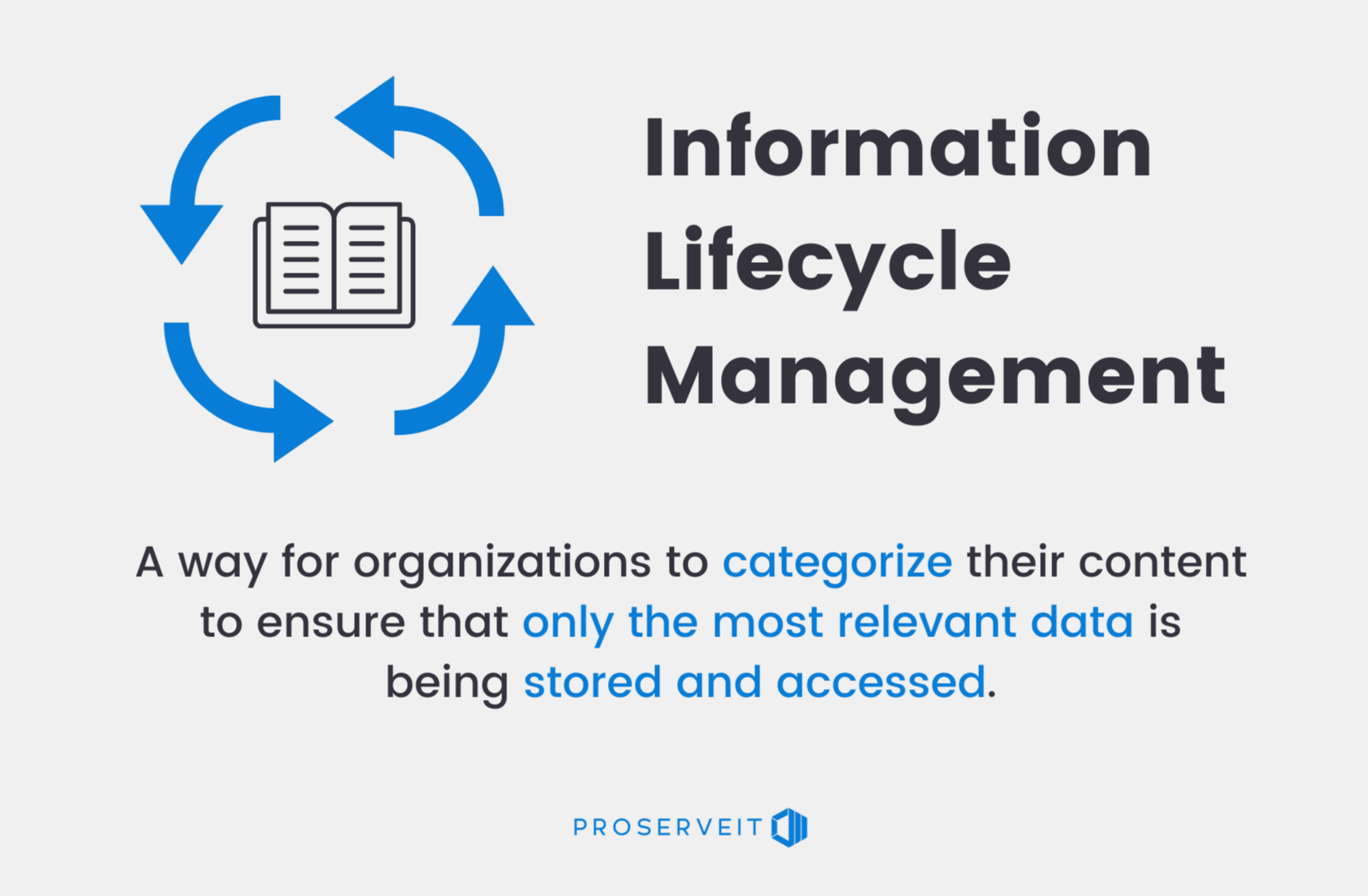Is your organization having trouble keeping track of what content is up to date? Are you wasting valuable storage space on old, outdated documents that have outlived their usefulness? Does your organization fall into an industry that is heavily regulated regarding document and asset storage? Implementing Information Lifecycle Management can help you with these.

Information Lifecycle Management - What Is It?
According to Gartner, “Information Lifecycle Management is an approach to data and storage management that recognizes that the value of information changes over time and that it must be managed accordingly. Information Lifecycle Management seeks to classify data according to its business value and establish policies to migrate and store data on the appropriate storage tier.”
More simply put, Information Lifecycle Management is a way for organizations to categorize their content to ensure that only the most relevant data is being stored and accessed. A good Information Lifecycle Management system classifies assets at the appropriate level and applies the corresponding standards of care at each stage of their life.
Information Lifecycle Management Benefits - Why is it Important?
There are a number of reasons why Information Lifecycle Management should be considered important to your organization. Here are 3 major benefits:
- Benefit #1. Keep track of your content 📑
First of all, Information Lifecycle Management helps you to keep track of your content. It’s no secret that you are creating content in much greater volume than you ever used to, and that your content is sticking around for longer and longer. Information Lifecycle Management is intended to act as a running inventory of what content you have.
- Benefit #2. Avoid wasting valuable storage space 💾
When you know what content you have, you know what content is old, outdated or has outlived its usefulness. Information Lifecycle Management therefore helps to identify documents that shouldn’t be taking up valuable storage space on your systems. If you use Cloud storage, you pay per usage. Avoiding the use of storing unnecessary content helps you reduce costs.
- Benefit #3. Help meet regulatory compliance standards 📝
Most important, the world is demanding more and more regulations, especially where privacy is concerned. When you use a properly constructed Information Lifecycle Management policy, it will identify those documents/assets that need to be monitored for regulatory compliance purposes.
How SharePoint Helps with Information Lifecycle Management
Convinced of the importance of Information Lifecycle Management, but not sure where to start? We recommend utilizing Microsoft SharePoint in your organization.
- Related:
Why Use a SharePoint Content Management System? A Quick Guide for Executives [Infographic]
SharePoint works as a solid Content Management platform, with extra features built in to assist with Information Lifecycle Management, such as the ability to:
✔️ Create policies around the places that the information is stored (e.g. you can implement a policy that focuses on one folder);
✔️ Add features to your content (like barcodes or labels) that allow you to track where and when the content is used;
✔️ Audit your content to gain more insights into how, when or where content is being accessed by your employees; and
✔️ Implement workflows, which means that your organization can streamline and automate some of the processes that you build in to your Information Lifecycle Management policy. This can alleviate the strain of having to manage things manually, which saves your employees time and saves you money.
SharePoint Automation with Workflow:
Check out the short demo below and see how easy it is to develop an efficient workflow with SharePoint!
Tips on Implementing Information Lifecycle Management - 3 "Don'ts"
It’s been said that one of the top reasons that ILM initiatives fail to deliver value is because organizations over-scope the project and aim for perfection. So how can you make sure that you don’t fall into the “abyss”? Follow these 3 “Don’ts”:
🚫 Don’t tackle every information asset.
The majority of your information doesn’t actually merit to be part of your Information Lifecycle Management program. Prioritize!
🚫 Don’t complicate things.
Balance out the granularity of your Information Lifecycle Management program with the availability of your organization’s resources.
🚫 Don’t neglect the governance piece of the project.
Governance is a necessary evil. Without designing and enforcing standards and having the people and processes in place, you will end up with ad hoc lifecycle management.
So, what's next?
Information Lifecycle Management is an important step to take if you are to streamline your content library to increase your team’s productivity. Want to implement it but are not sure where to start? Contact us to get your questions answered.
If you want to get more information about Content Management, refer to the related content below:
- Learn about our recommended content management system, Microsoft SharePoint here>>
Tags:
September 19, 2017
Comments